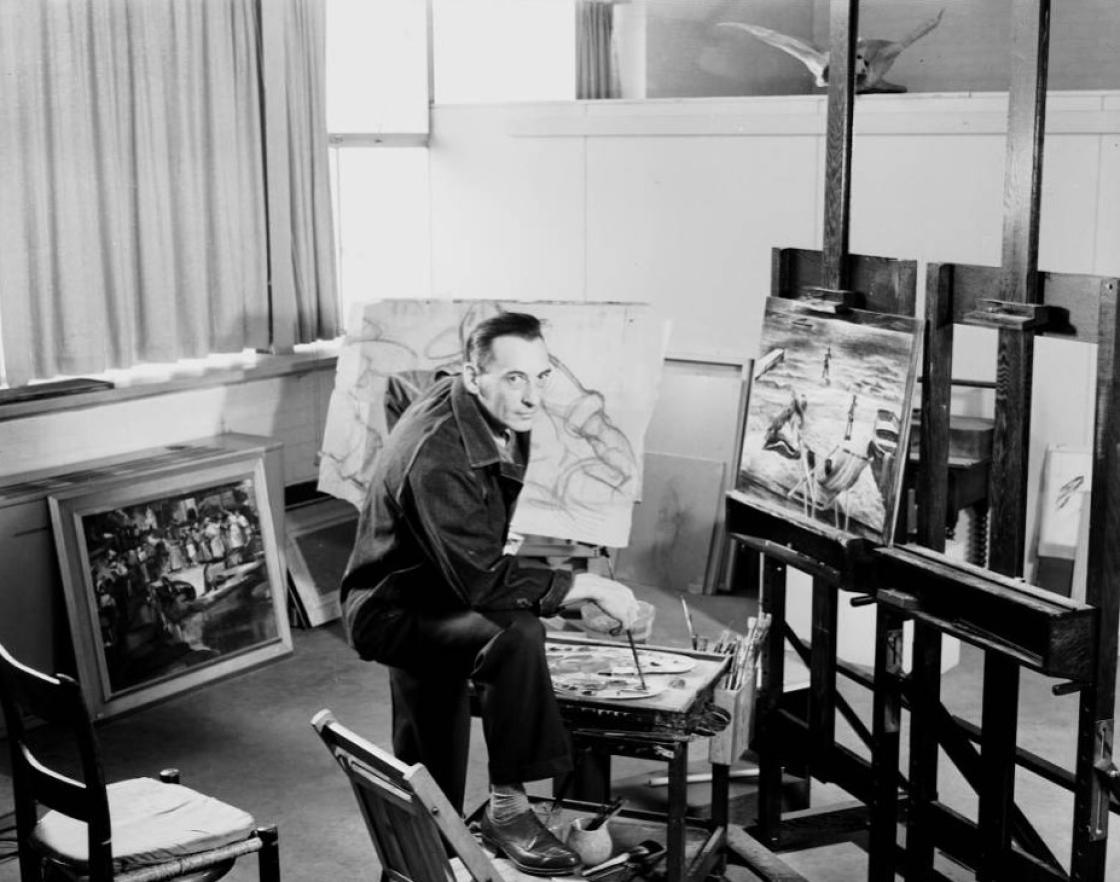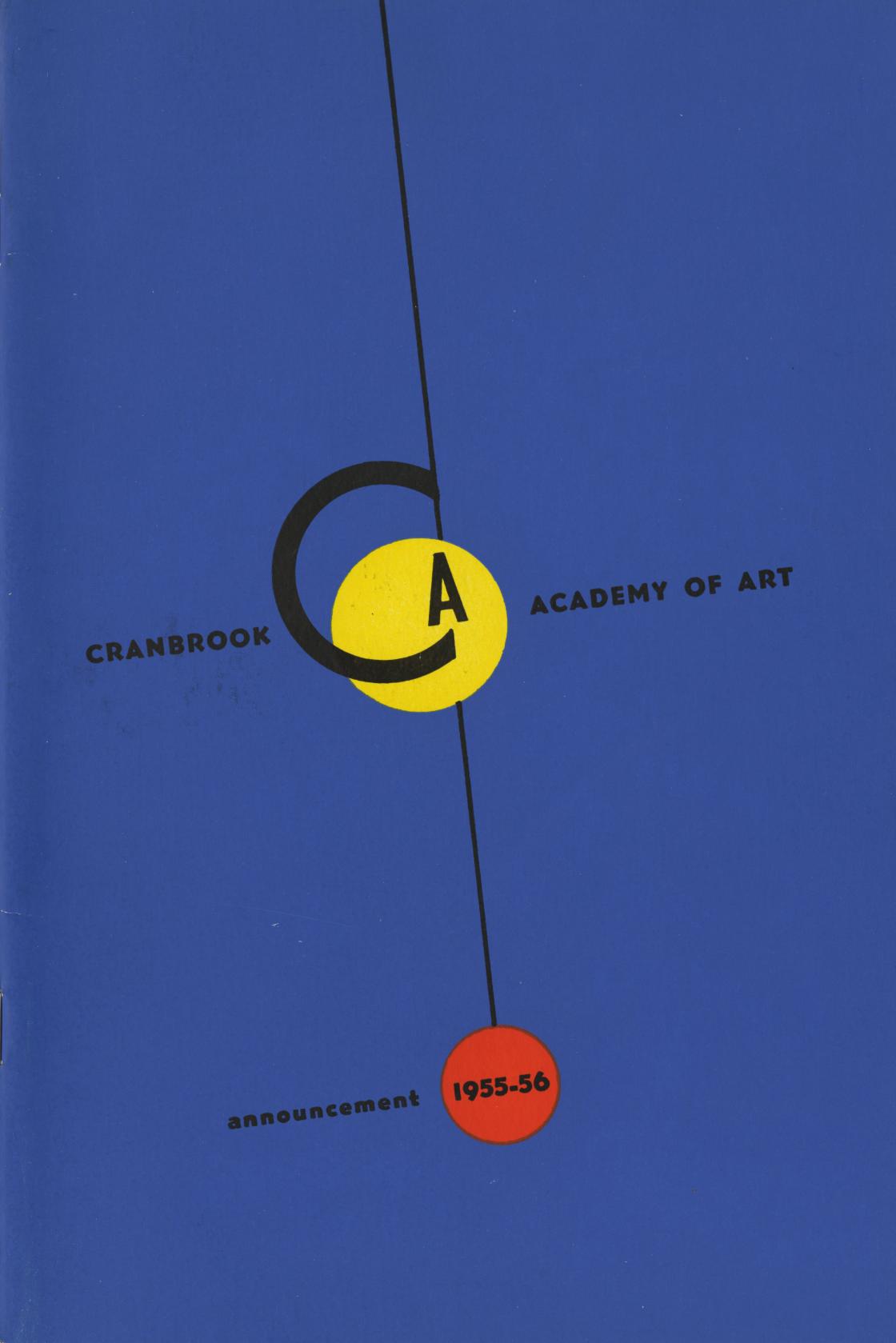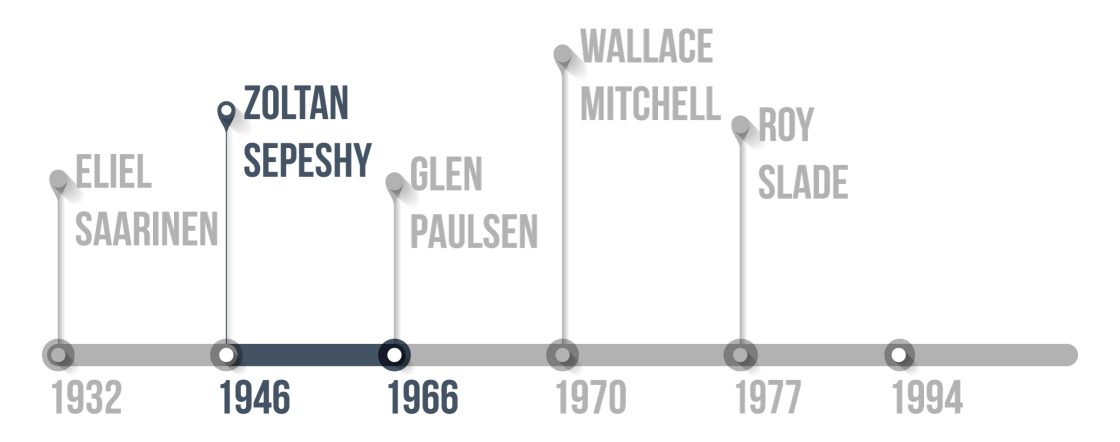
Educated at the Royal Academy of Art in Budapest and the Fine Arts Academy in Vienna, Zoltan Sepeshy came to the United States in 1921 and to Cranbrook in 1931. After fifteen years as an instructor and director of the painting department, Sepeshy became Director of the Academy in 1946, and in 1959 the role was expanded and renamed President.
Zoltan and Dorothy Sepeshy moved into the president’s house (Saarinen House) in 1951. Keeping his existing painting studio near the Museum, Sepeshy walled Saarinen’s studio off from the rest of the home. The studio space then served as a faculty lounge and design studio (initially for designer-in-residence Ted Luderowski). In addition to removing all of Saarinen’s furnishings, Sepeshy removed the entrance hall mirror and had acoustical tiles glued to the second-floor ceilings.
SEPESHY'S ART
Throughout his six-decade career, Sepeshy painted hundreds of works, exhibited widely, and regularly won prizes in national competitions. Internationally known for his deft handling of egg tempera, he authored an instructional volume Tempera Painting in 1946.
Variously associated with the American scene, precisionism, and regionalism, Sepeshy’s ever evolving style reflected his constant engagement with the wider art world—as he wrote: “the artist’s responsibility is to look forward, not backward.”
Click Here to View More Paintings by Sepeshy.
THE ACADEMY, 1946 - 1966
Sepeshy continued the founding ethos of the Academy: the pursuit of individual interests in the studio, with master artists leading students by example and informal critique. At the same time, under Sepeshy’s leadership the Academy became accredited by the North Central Association of Colleges and Secondary Schools in 1960, giving Cranbrook the same academic status as other colleges and professional schools.
In 1964, Sepeshy oversaw the first physical addition to the Academy since Saarinen’s death: a foundry capable of casting up to 1,000 pounds of molten iron or bronze. It was in this foundry that Head of Sculpture Julius Schmidt and students cast a large, functional iron cannon in 1966. The cannon’s muzzle was in the shape of Sepeshy’s nose, and campus folklore holds that disgruntled students rolled the cannon to Saarinen House and attempted to fire it through the front door. Though it failed to ignite then, the cannon was been successfully fired in May 1966 and again in August 1990, at the start of the Gulf War.
Financial problems plagued the later years of Sepeshy’s tenure. When questioned about the Academy’s finances, Sepeshy replied: “The endowment is not money, it’s not books, it’s not bricks and stones. It is the endowment of an attitude, of a process, of the philosophy that there is and should be art in this country.” Further, without the pull of Saarinen and Milles, fewer visiting artists and designers were coming to the Academy.
Click on the images below to learn more:
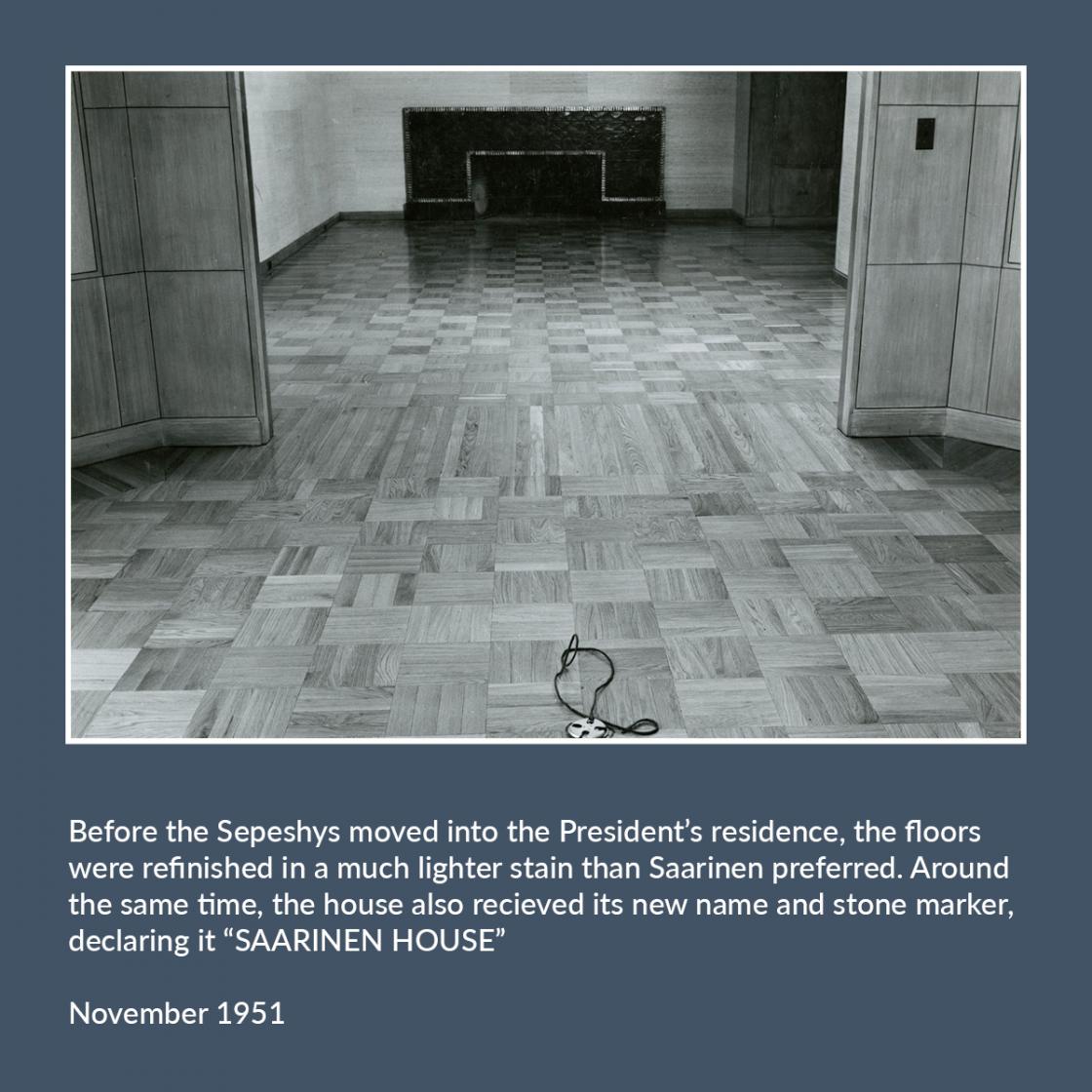

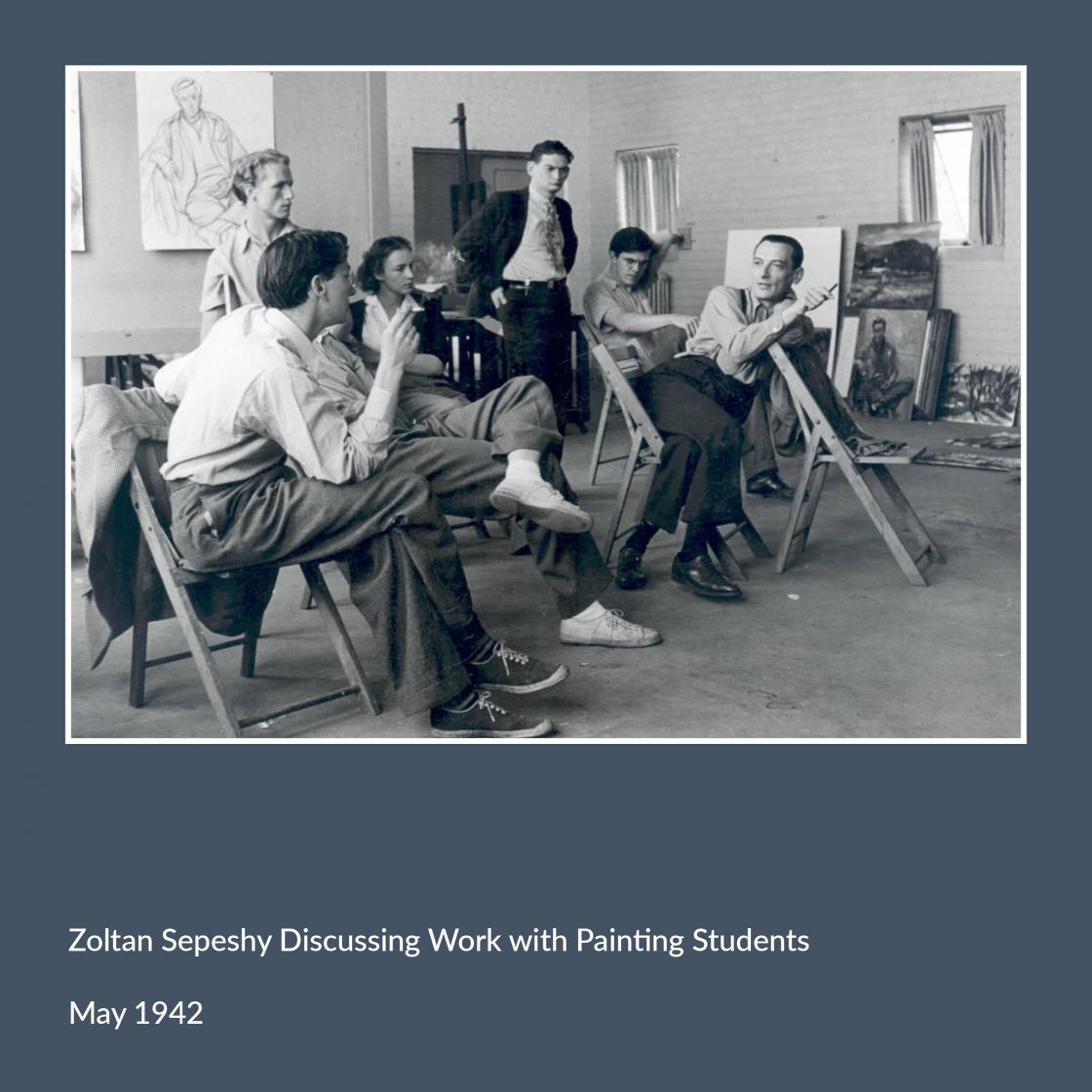
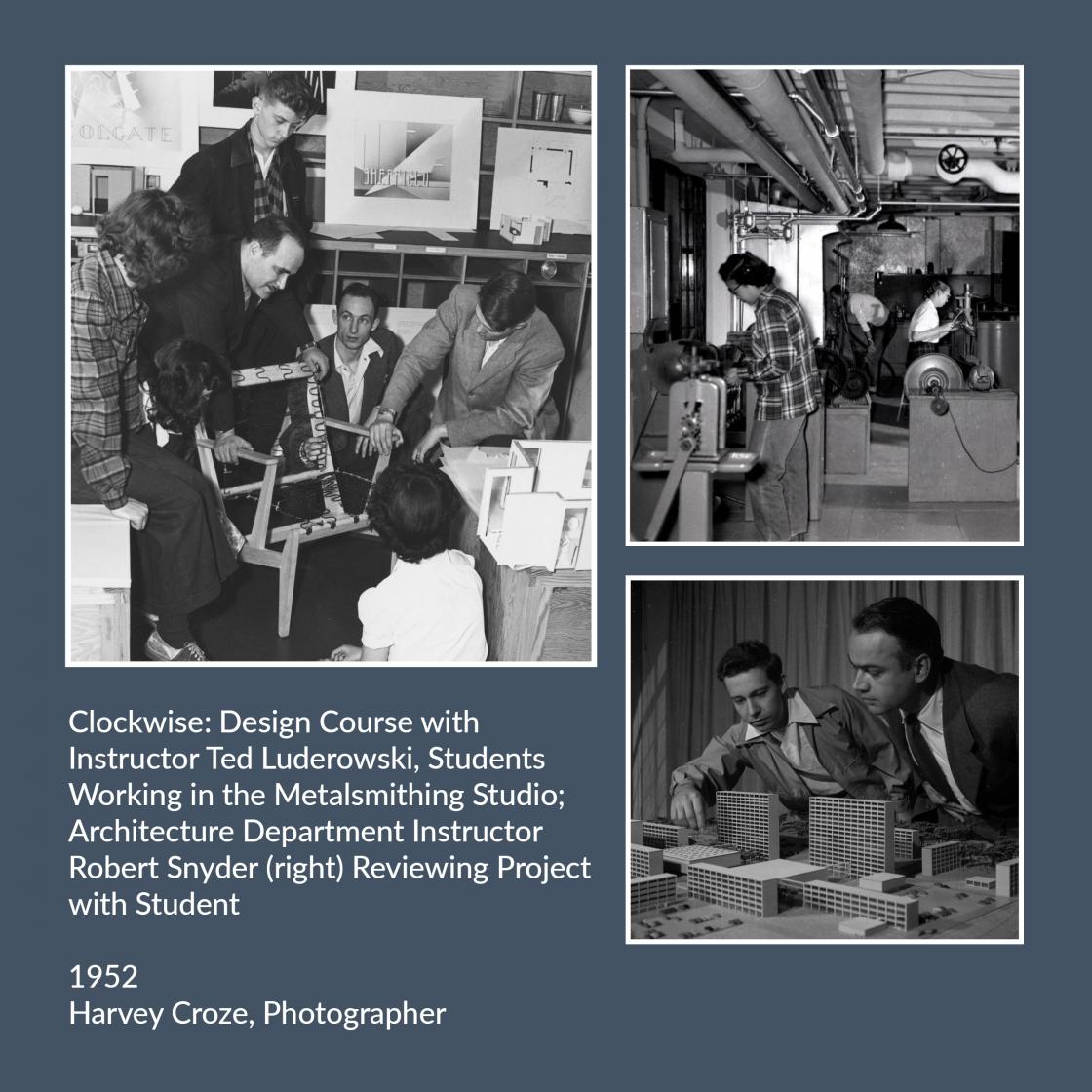

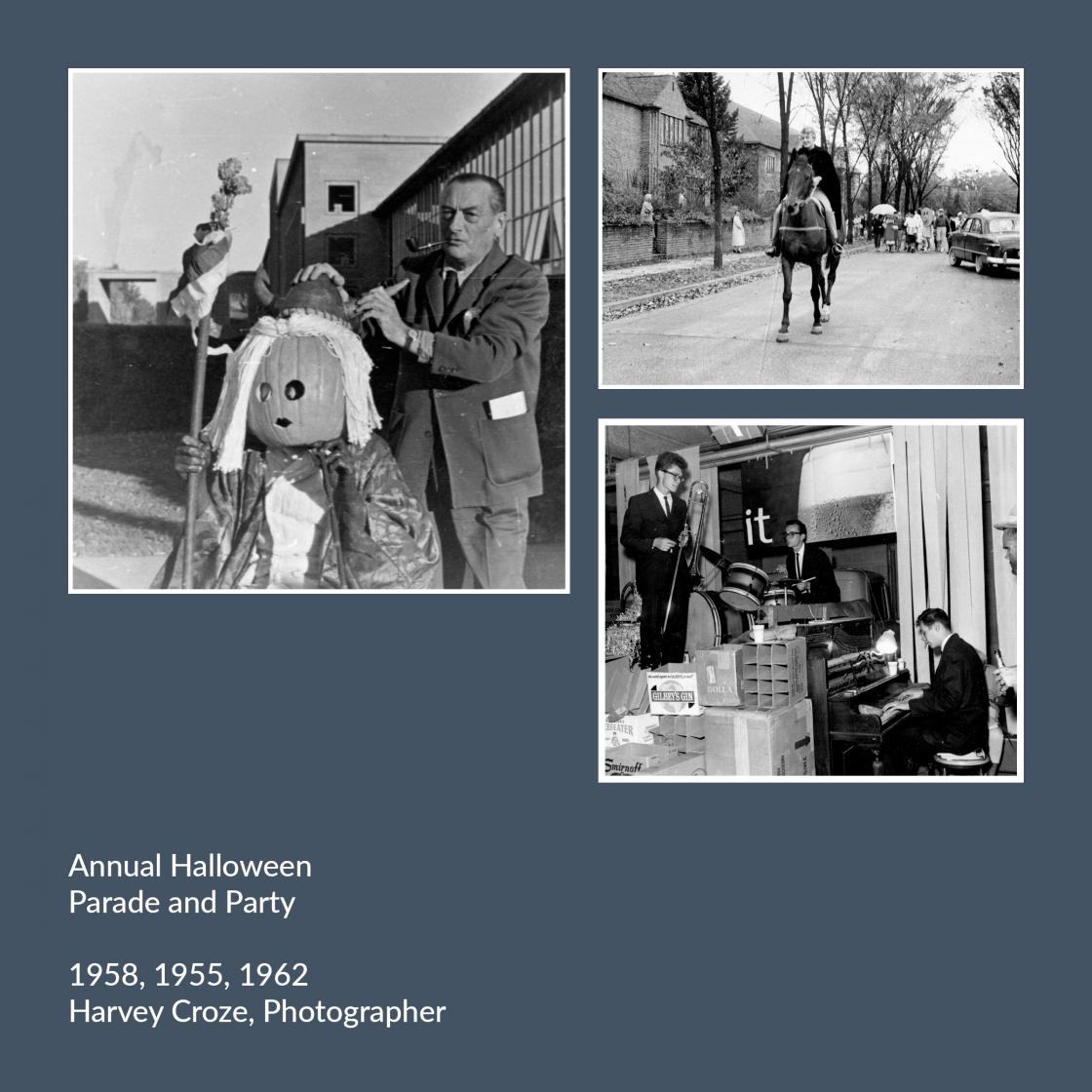
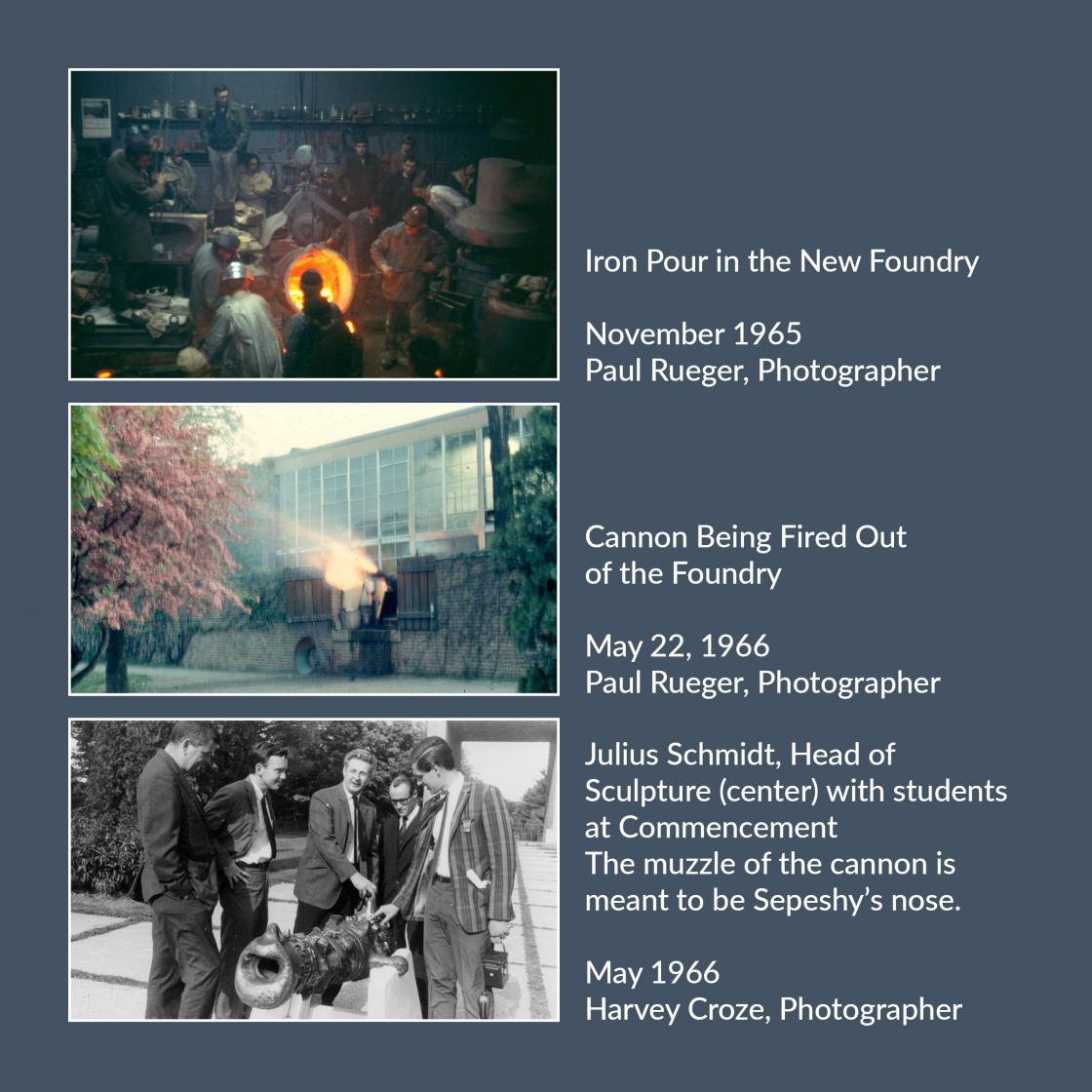
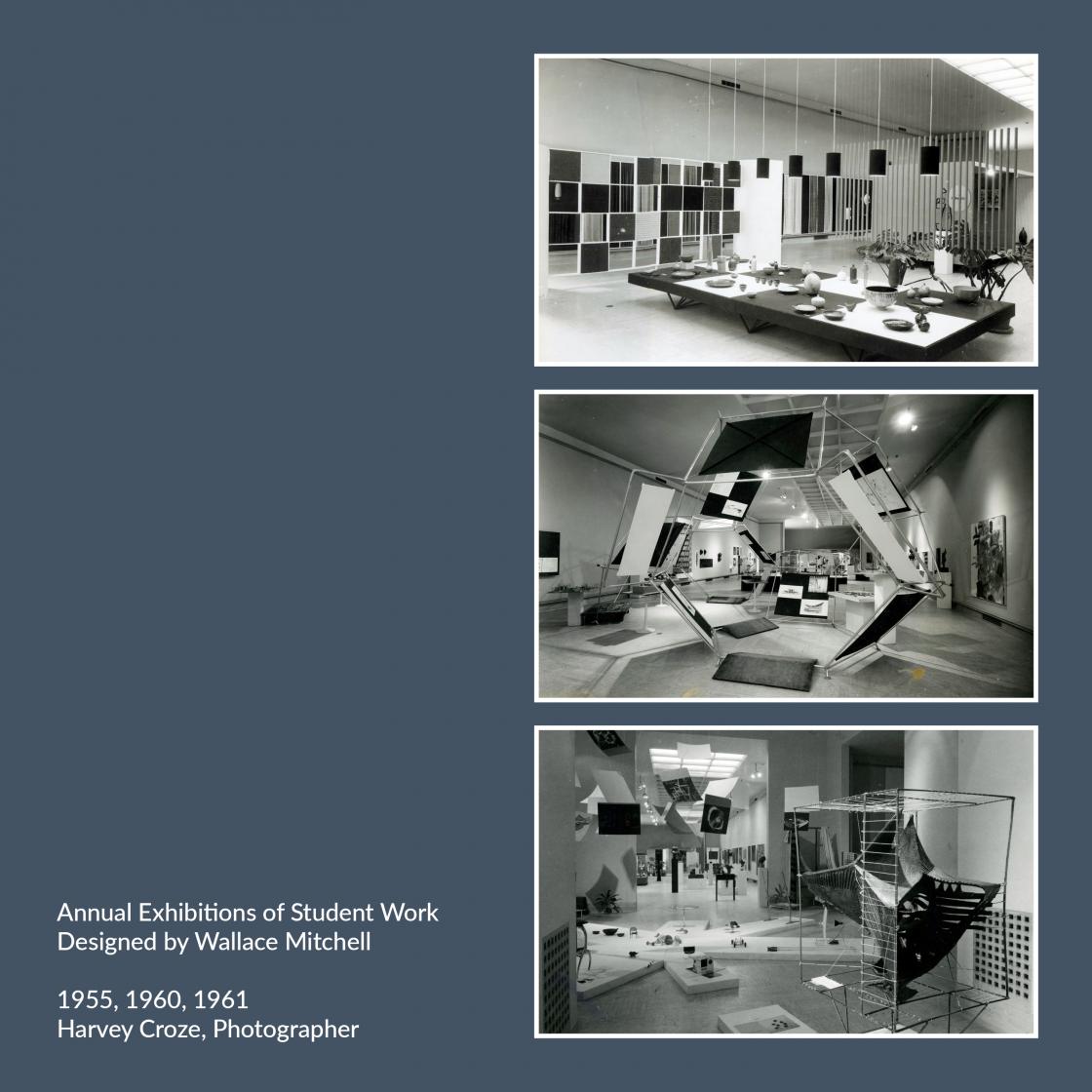
IMAGE CREDITS
Banner Image: Annual exhibition of student work in displays designed by Wallace Mitchell, 1960. Harvey Croze, photographer.
Zoltan Sepeshy in his Cranbrook studio, October 1943.
Cranbrook Academy of Art Course Announcement Cover, 1955.
Zoltan Sepeshy, Factory Rhythm (Back of Hudson Motor Plant), c. 1947. Collection of Chester Borck Trust.
All images courtesy of Cranbrook Archives.

